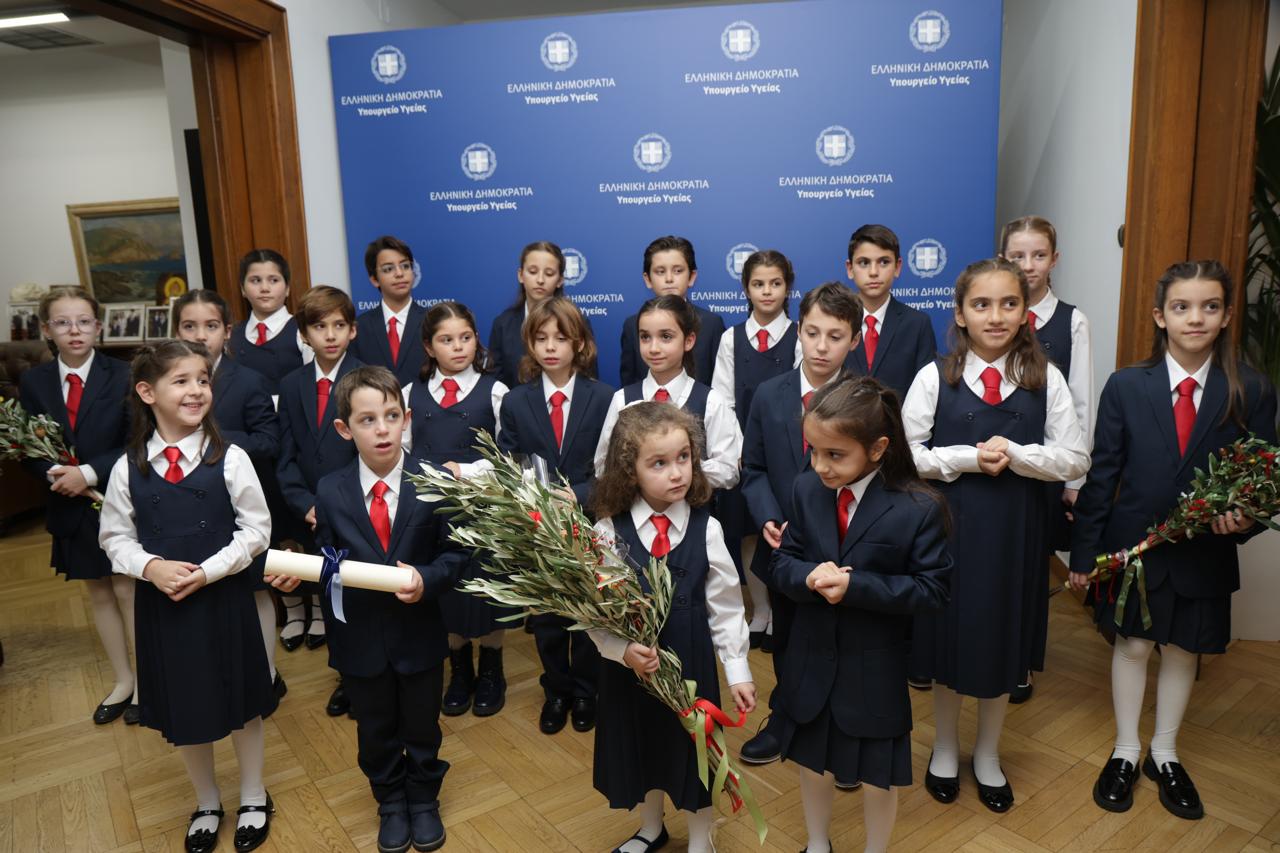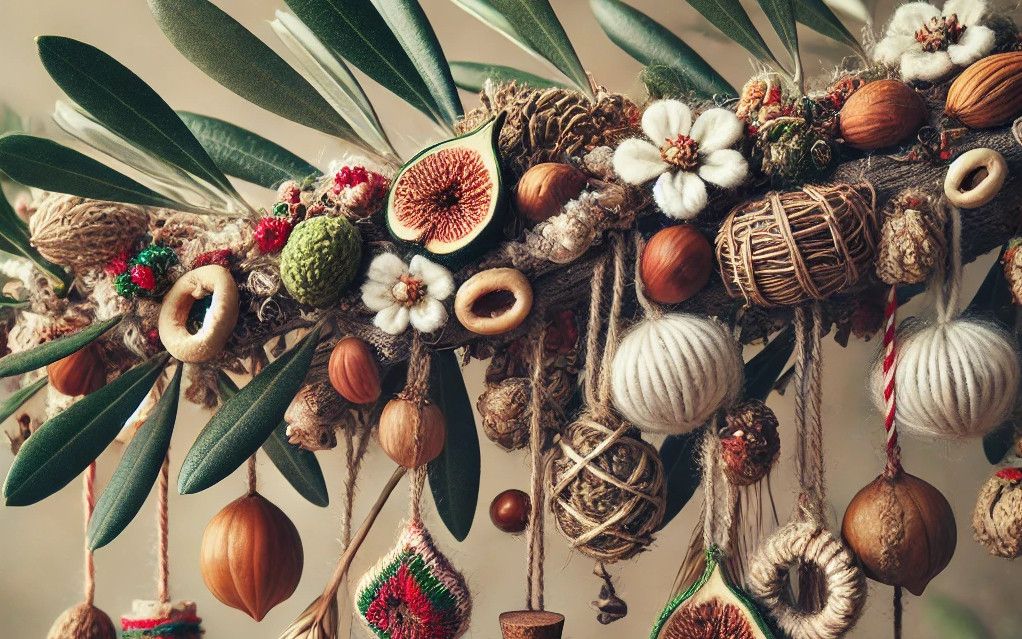by Eugenia Manolidou
The Eiresione (εἰρεσιώνη), the ancient reference to the adorned olive branch, and the Ayermoi (ἀγερμοί), the roots of today’s Christmas carols (kalanta), are two vivid examples of the enduring continuity of Greek culture. The Eiresione symbolizes prosperity, community, and a connection with nature, while the Ayermoi are associated with the sung wishes children offered to householders, who opened their doors to welcome them. Despite changes in form and context, both customs have preserved their essence, adapted to the needs of each era, and remain timeless symbols of Greece’s cultural continuity.
The Eiresione was an adorned olive branch, decorated with fruits and woolen ribbons made of sheep’s wool – known as erion or eiron – from which its name derives. It was an integral part of the Pyanepsia festival, during which children would carry the Eiresione around, singing hymns about prosperity and abundance. Later, the decorated branch was placed on the doors of houses as a talisman for good fortune and protection.
According to Plutarch, the first Eiresione originated from a supplication (iketiria) offered by Theseus to Apollo, seeking the god’s help in defeating the Minotaur. After his victory, Theseus instituted the Pyanepsia celebration in Athens, with the carrying of the Eiresione as a central ritual. This act embodied faith in divine protection and the community’s connection with nature and the harvest. While holding the Eiresione, children with both parents alive would walk through the streets, knocking on doors and singing blessings for the householders and their families. The phrase “ei men ti doseis, ei de mē, ouch estēxomen” (“Give us something, or we will not stay”) from Homer’s Ayermoi reminds us of the traditional carols and the custom of householders giving treats to the children.
When Greece was conquered by the Romans, the Ayermoi became known as Kalendae, from the Greek verb «καλέω-ῶ» (to call.) Over the centuries, the Kalendae evolved into the κάλαντα (kalanta: carols), which retained the structure and spirit of the ancient Ayermoi, spreading joy and wishes to families during the Twelve Days of Christmas.
The Sourva, a tradition from Macedonia and Thrace, involves a decorated branch – usually from laurel or cornel wood – used to convey wishes for good fortune and prosperity. As children move from house to house singing New Year’s songs, this custom provides a direct link to the ancient Eiresione. The Christmas tree is also considered by folklorists to be a modern evolution of the Eiresione. Its decoration with baubles, ribbons, and ornaments reflects the adornment practices of antiquity, keeping the custom alive in a new form.

The preservation and revival of such ancient traditions are crucial for cultural awareness. On Christmas Eve, the students of Elliniki Agogi sang the ancient Ayermoi as well as traditional carols at the Ministries of Culture and Health and included references to Greece’s enduring cultural heritage, reviving the ancient custom of the Eiresione. In doing so, students and educators highlighted the importance of connecting with our roots, emphasizing the need to preserve and continue Greek traditions for future generations.
Sources
- Homeri Opera: Vita Herodotea. Oxford, Homeri Opera V5.
- Plutarch, Parallel Lives: Theseus, trans. Andreas I. Pournaras, Scientific Society of Greek Letters Papyros, Athens 1975.
- Politis, N.: Traditions of the Greek People, Vol. I & II, Grammata Publications, Athens 1994.
- Babiniotis, G. (2002) Dictionary of the Modern Greek Language (2nd ed.). Athens: Lexicology Centre. (1st ed.: 1998).
